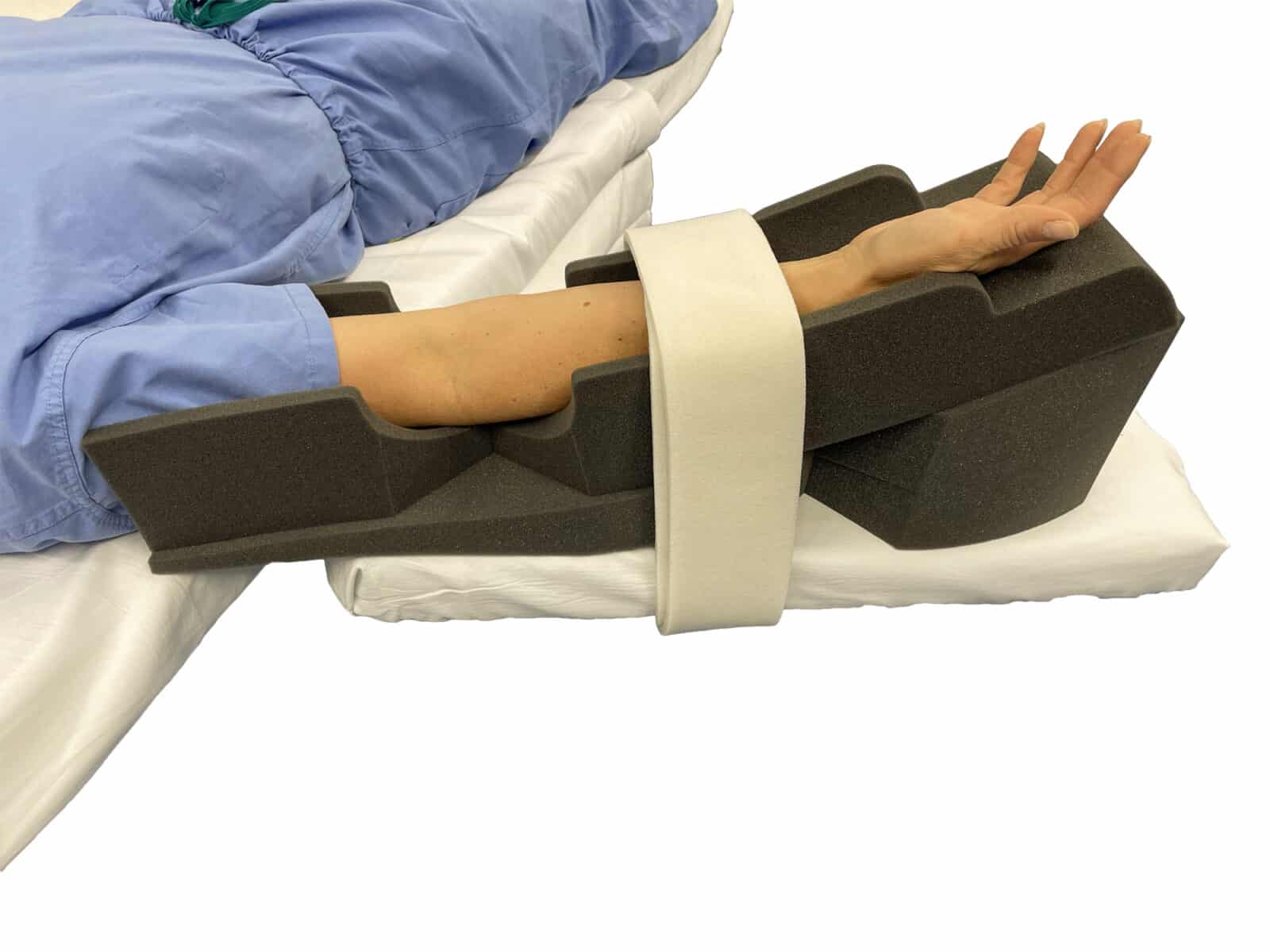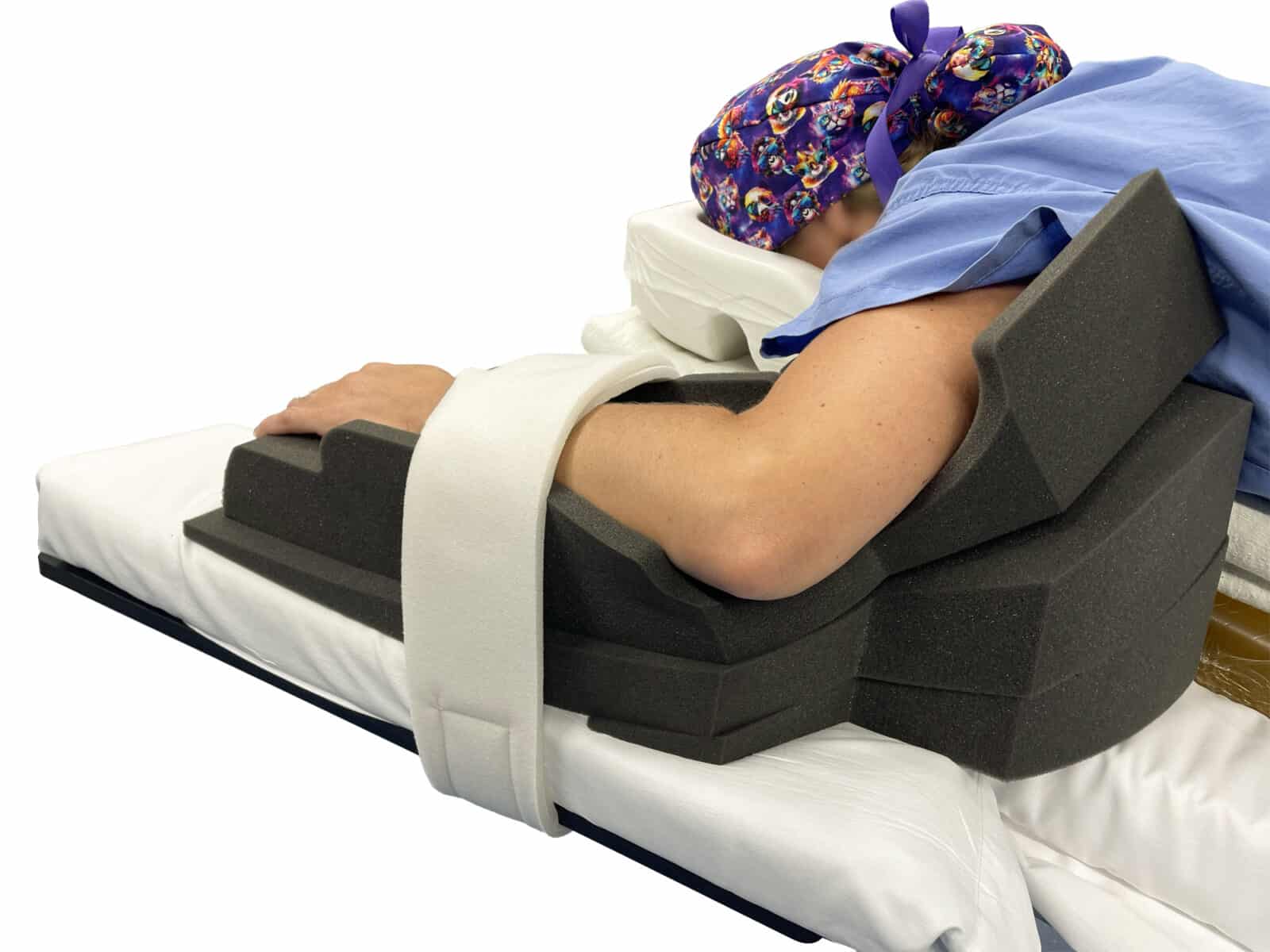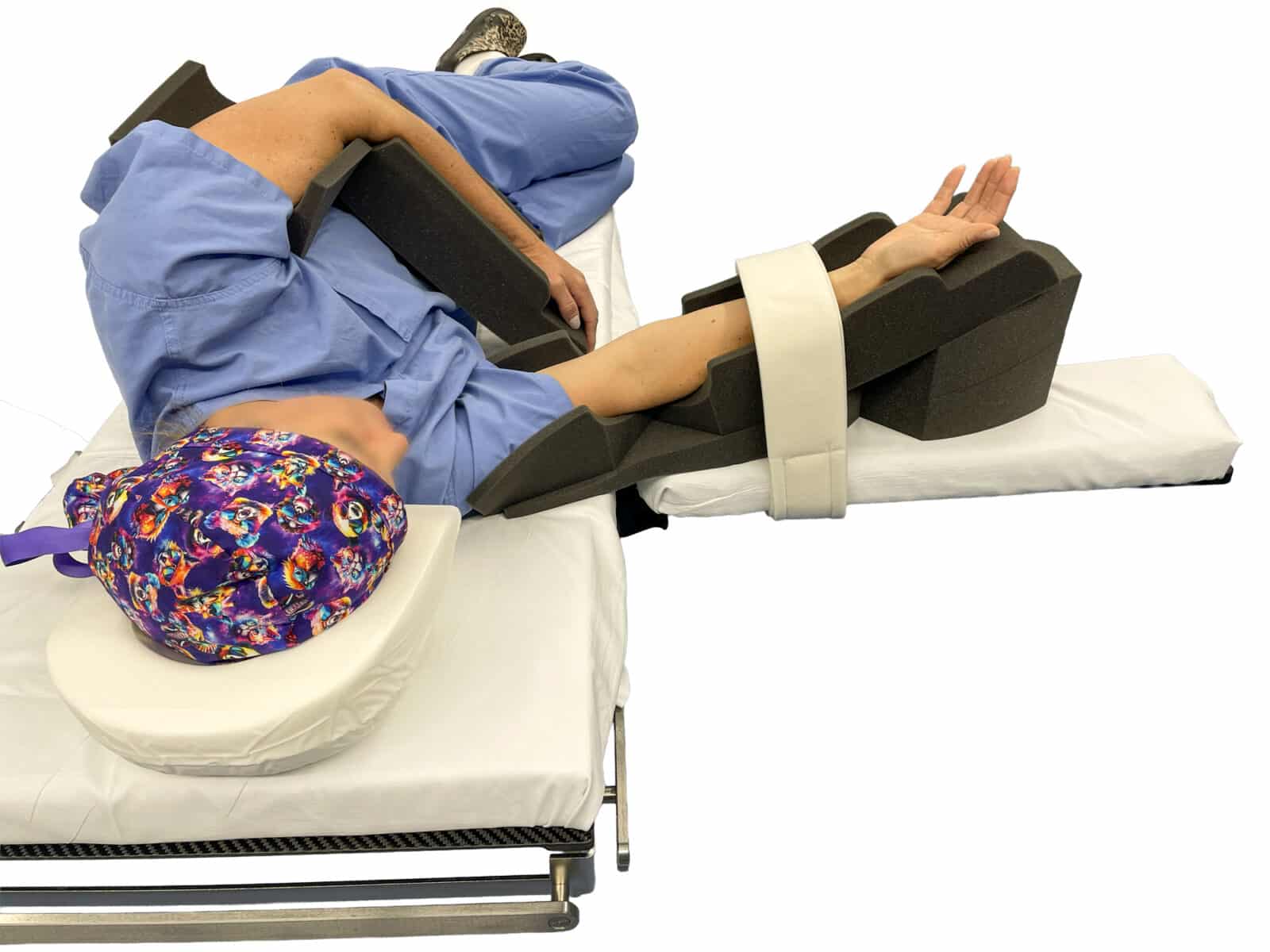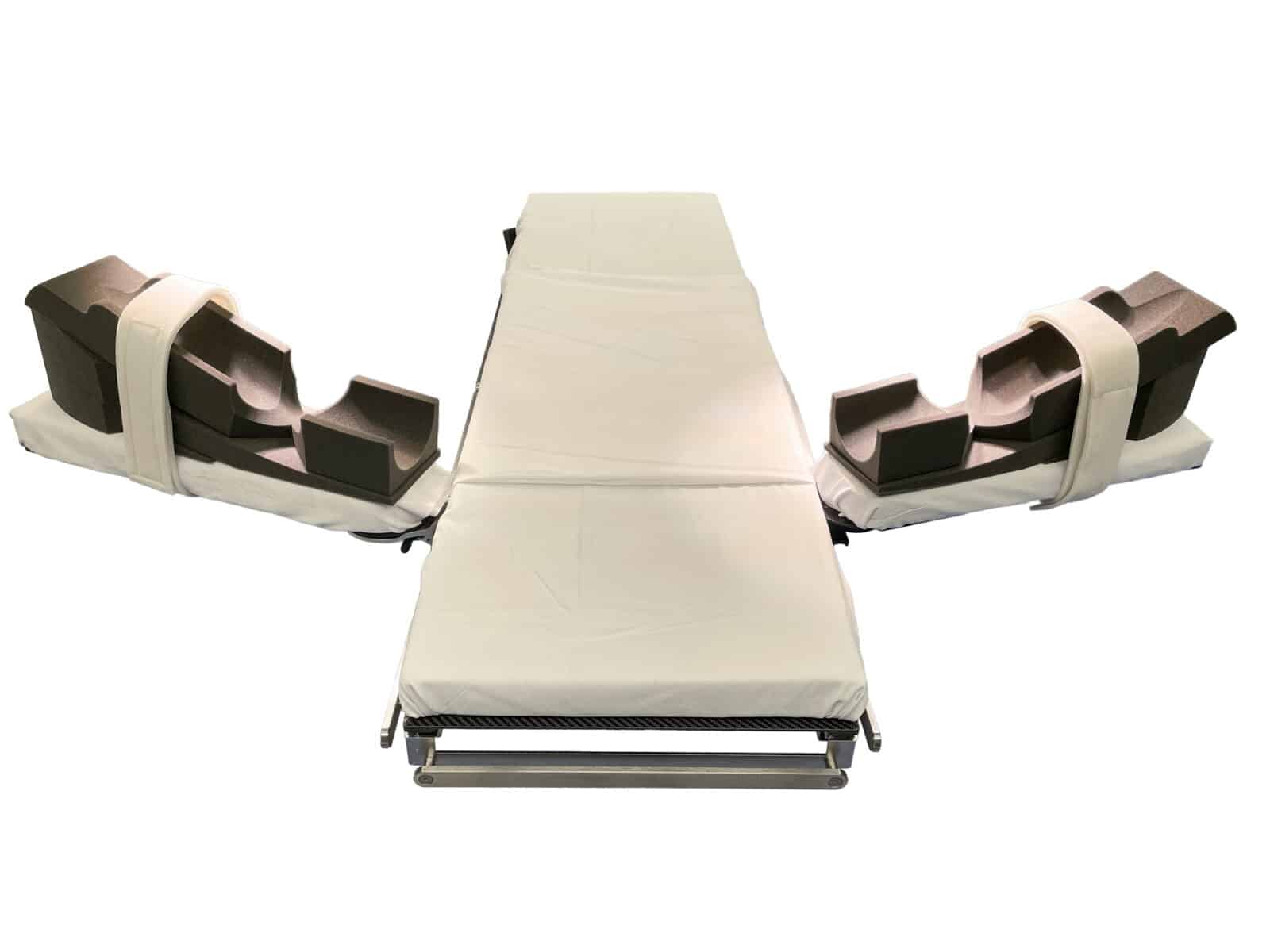Elevate Extremity Cradle
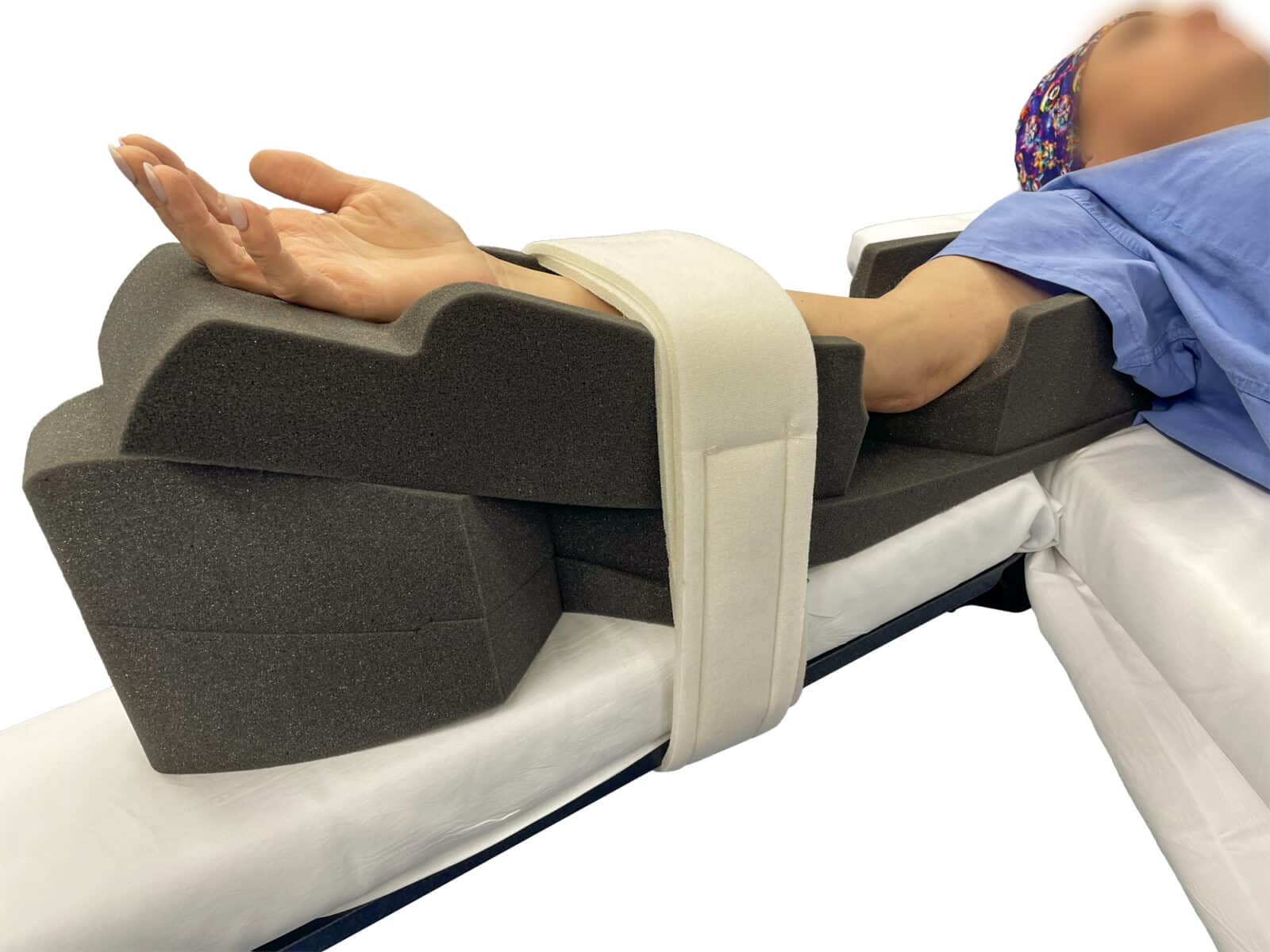
Positioning Matters—Reduce the Risk of Preventable Injuries
Improper arm positioning during surgery is a leading cause of brachial plexus and ulnar nerve injuries, which can result in long-term numbness, weakness, or loss of function. These complications are preventable—and costly—often leading to extended hospital stays, patient dissatisfaction, and costly malpractice claims.
The Elevate Extremity Cradle is a single-use positioning device designed to gently elevate and support a patient’s extremity during supine or prone procedures. Its gradual, anatomical lift helps reduce tension, compression, and circulatory compromise in the neurovascular structures of the limb, supporting better outcomes and helping minimize preventable risks.
Designed by Clinicians. Built for Versatile Care.
1. Conical Limb Cradle
Provides full-length contact and reduces unsupported gaps under the limb.
2. Adjustable Hinge Point
Allows for variable limb angles based on procedure or anatomy.
3. Removable Support Wedges
Customize elevation height or pressure relief by repositioning or removing wedges.
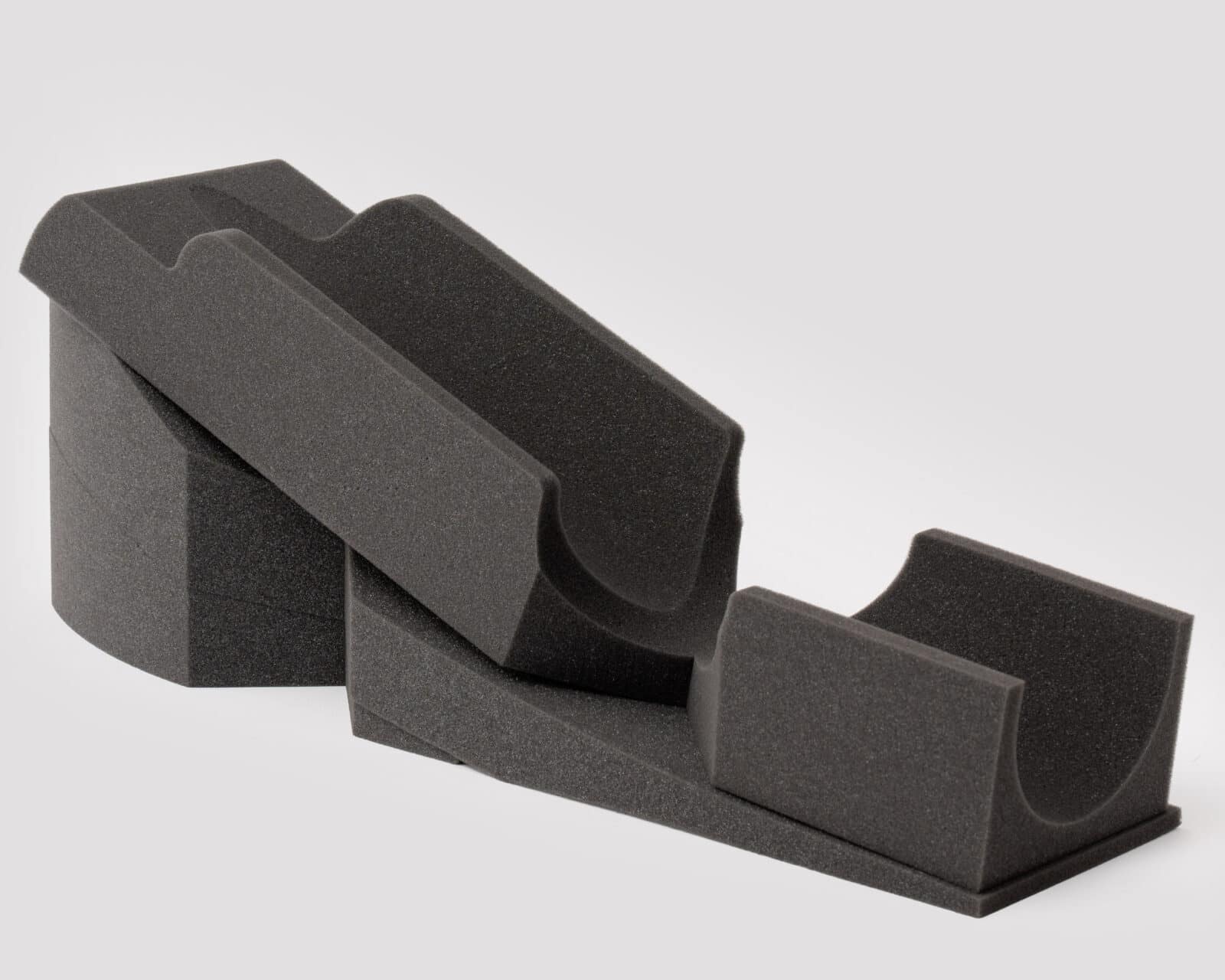
4. Variable Incline Zones
Gradual slope supports neurovascular alignment and reduces strain across the limb.
Soft, Contoured Strap
Helps gently stabilize the limb without excessive pressure or constriction.
Single-Use Design
No cleaning, no reprocessing—ready when you need it, then dispose.
Clinical Insight & Evidence
Standards Alone May Not Be Enough
Peripheral nerve injuries have been reported even when surgical positioning meets ASA guidelines, including the commonly accepted 90-degree arm abduction limit. This is because current standards are based largely on expert consensus—not definitive biomechanical thresholds. Factors like individual anatomy, arm weight, and prolonged positioning time can all contribute to nerve stress, even in well-intentioned setups. (Chui et al., Anesthesia & Analgesia, 2018)
Elevate’s gradual, supportive elevation helps address these variables by minimizing compression, stretch, and positional instability—bringing structure to an area where “standards” leave room for injury.
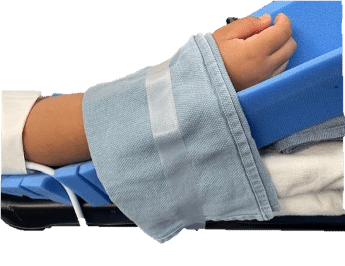
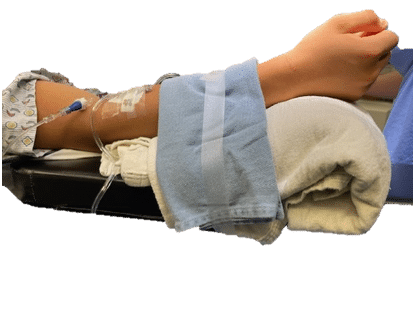
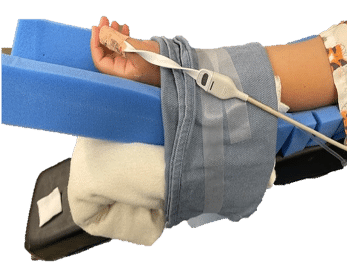
Ditch the Makeshift Fixes—Comply with Modern Positioning Standards
AORN guidelines now prohibit the improvised setups using items like pillows, blankets, and towels to position or prop up limbs in the OR. (AORN Guidelines for Perioperative Practice – Positioning the Patient – Section 2.9.1) These makeshift methods are inconsistent, unstable, and a direct violation of current standards—leaving hospitals exposed to both patient safety risks and surveyor citations.
The Elevate Extremity Cradle is a purpose-built, single-use device designed to provide stable, anatomically supportive limb positioning.
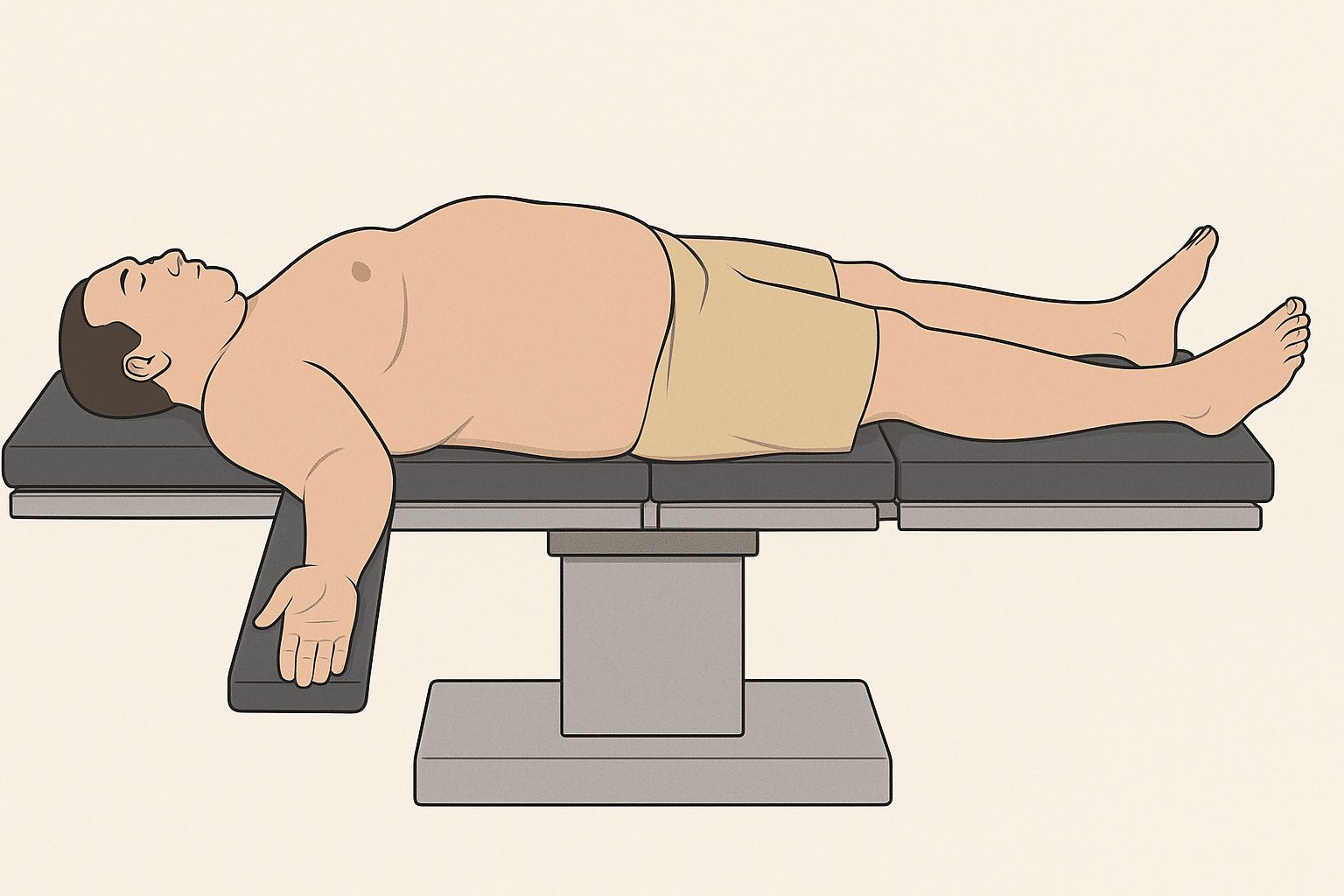
Specialized Support for Higher-Risk Body Types
The Elevate Extremity Cradle offers a single, purpose-built solution that adapts to the needs of diverse patients across a range of body types. For patients with higher BMI, the need for proper limb support is even more critical. Greater tissue mass increases pressure on blood vessels and nerves, elevating the risk of compression injuries and impaired circulation.
Clinical studies have identified BMI as an independent risk factor for perioperative injury, making structured, stable positioning a priority in these cases. (Waheed et al., Cureus, 2023)
Faster Setup. Better Positioning. More Time for What Matters.
Improvised setups take time, vary from one team to the next, and often need constant readjustment. The Elevate Extremity Cradle is quick to deploy, easy to adjust, and consistent from case to case—helping OR teams work more efficiently while supporting safer patient positioning.
A Small Investment that Helps Reduce Big Costs
Positioning-related injuries, such as brachial plexus and ulnar nerve damage, can lead to lengthy recovery, patient dissatisfaction, and costly malpractice claims—with settlements in these cases often exceeding six figures. If such injuries are deemed hospital-acquired, the associated costs are typically non-reimbursable, meaning the hospital bears the full financial burden.
And the costs go beyond injury. Makeshift setups using towels and blankets require ongoing laundering and replacement, consuming staff time and supply budgets. Worse yet, they slow down surgical prep: every extra minute spent adjusting limb positioning is a minute your team isn’t operating, turning over the room, or starting the next case.
The Elevate Extremity Cradle reduces these inefficiencies with fast, consistent, single-use support—lowering waste, setup time, and clinical risk in one step.
12%
of general anesthesia malpractice claims involve peripheral nerve injuries (Chui et al.)
$100k
Malpractice settlements for perioperative nerve injuries often exceed $100,000 (Grant et al.)
$22-133 per minute
OR cost per minute: $22 – $133 (depending on hospital and procedure type) (Source)
$4-8+ per case
Additional cost for improvised limb positioning using 4-8+ lbs of linen (Source)
How to Order
To place an order, set up an invoicing account, or ask about distribution opportunities, contact us directly. Our team will assist you with purchasing and answer any questions.
or call us at 330-247-5805 to place an order.

